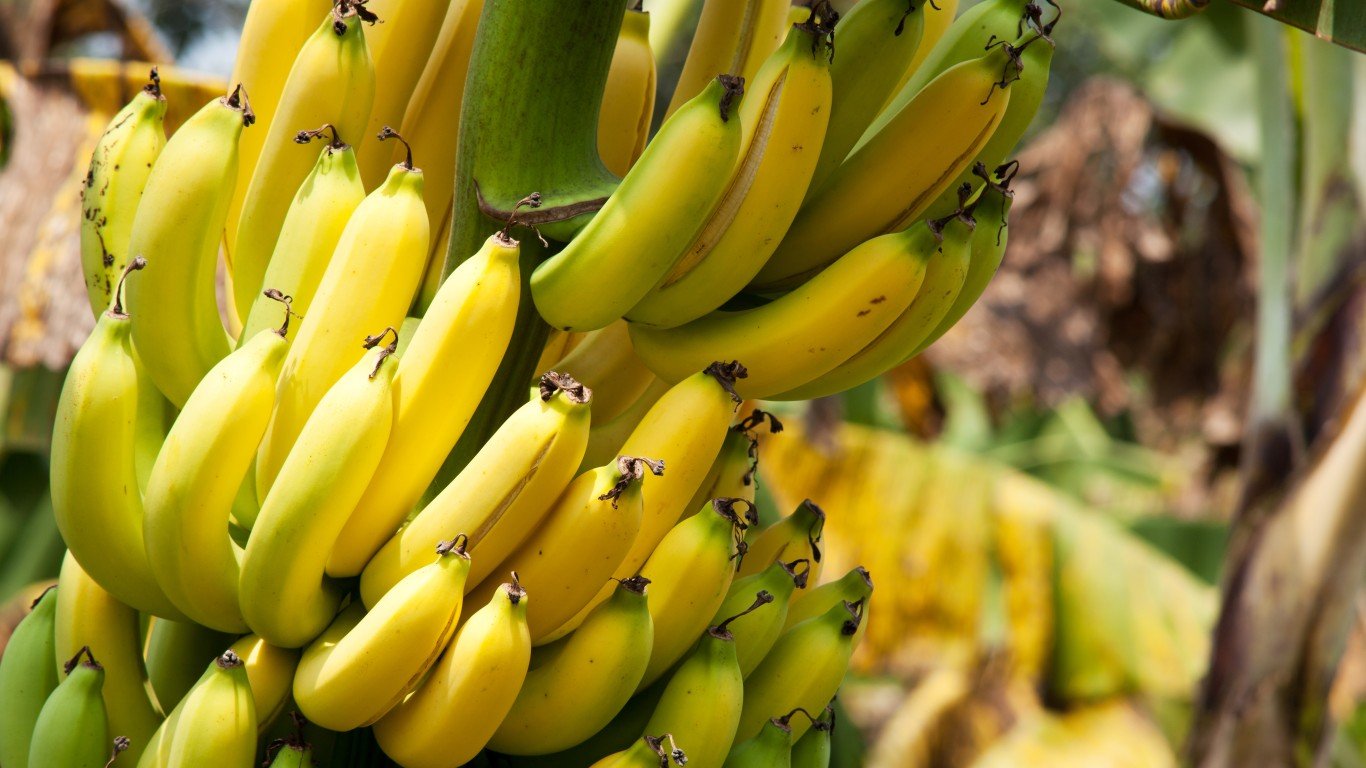
Bananas
> Largest U.S. producer: Hawaii
> Largest international producer: India
Bananas are highly susceptible to changes in temperature and rainfall. Rainfall patterns associated with climate change can lead to increased drought risk in some banana-growing regions and insufficient water availability can result in reduced fruit yield, smaller fruit size, and increased vulnerability to pests and diseases. Extreme weather events, such as hurricanes, tropical storms, and monsoon-level rainfall can damage banana plants, cause soil erosion, and lead to losses in crop yield. Flooding can also disrupt the root system of banana plants and increase the risk of disease incidence. Another problem is that the global banana industry is heavily dependent on a few susceptible cultivars, primarily the Cavendish variety, and the lack of genetic diversity means that there is limited variability for resistance to pests, diseases, and environmental stresses.
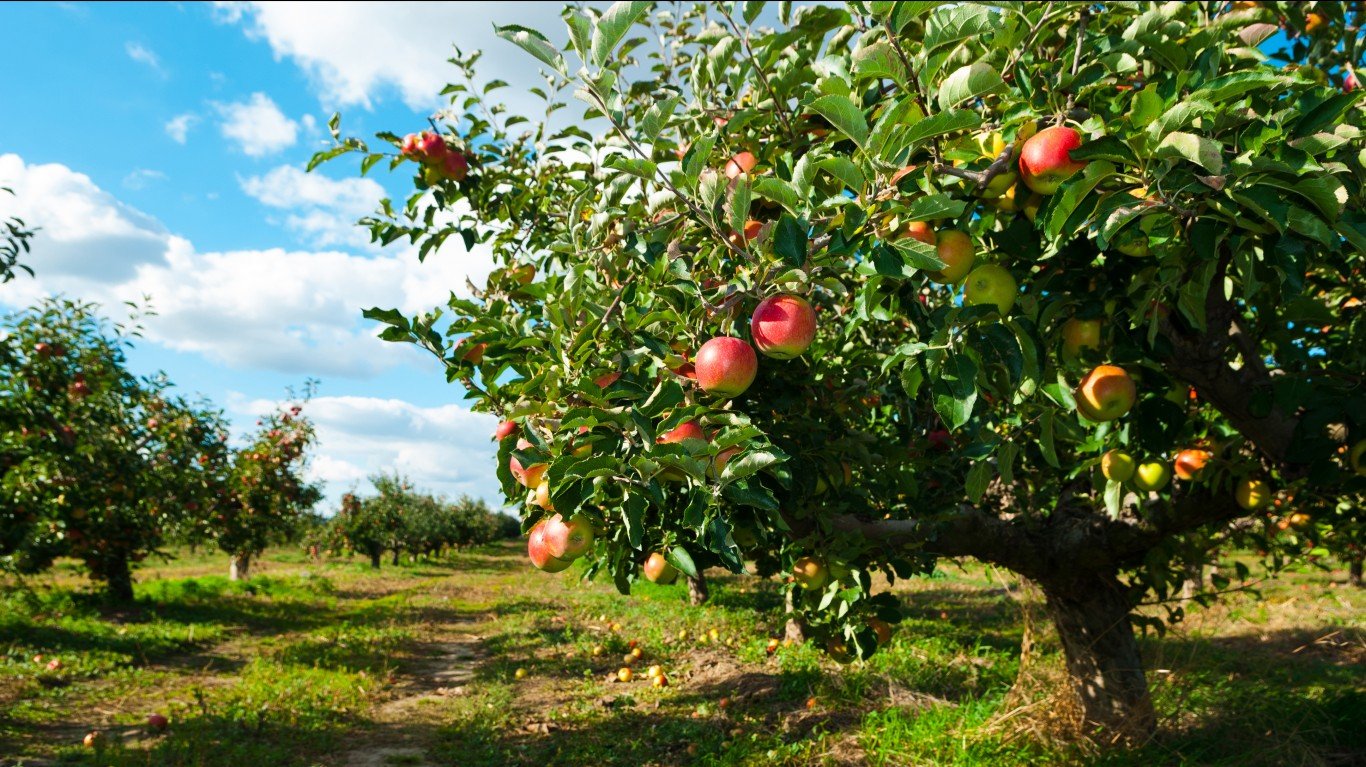
Apples
> Largest U.S. producer: Washington
> Largest international producer: China
Apple trees have specific temperature requirements, particularly for the accumulation of chilling hours during winter dormancy. Changes in temperature patterns can impact the fulfillment of chilling hour requirements, potentially affecting bud break, flowering, and fruit set. Alterations in temperature patterns, such as milder winters or inconsistent chill hours, can affect apple production, rendering some traditional apple-growing regions unsuitable, while other areas previously considered marginal may become more favorable. This can lead to geographic changes in apple production, impacting established apple-growing regions and potentially affecting the apple industry and economies.
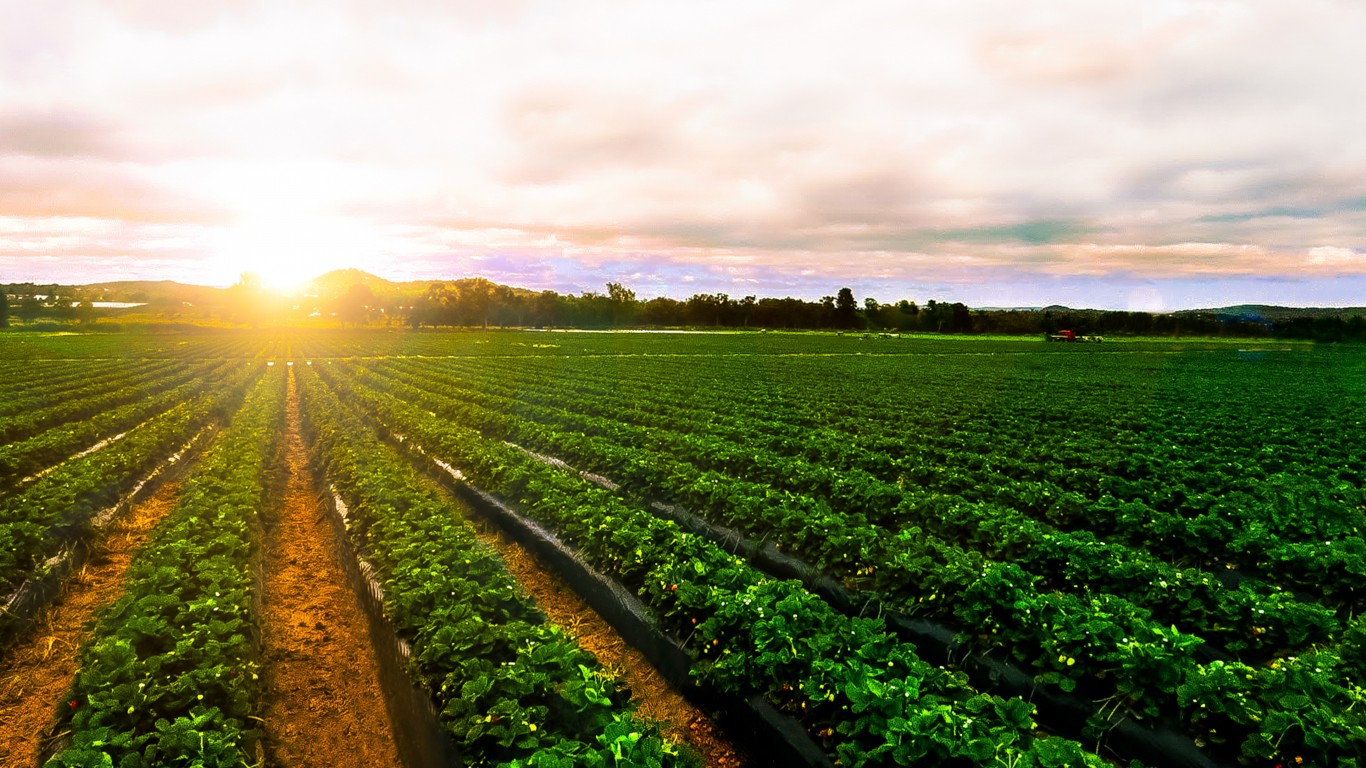
Strawberries
> Largest U.S. producer: California
> Largest international producer: China
Changes in temperature patterns associated with climate change can have significant effects on the growth and development of strawberries. High temperatures can reduce pollen viability, impacting pollination and fruit set. Heatwaves during flowering or fruiting stages can cause stress, leading to reduced yields and poorer fruit quality. Warmer temperatures can favor the proliferation of certain pests, such as spider mites and aphids, leading to increased infestations and damage to the plants and fruit, while changes in rainfall patterns can impact the prevalence and severity of fungal diseases.
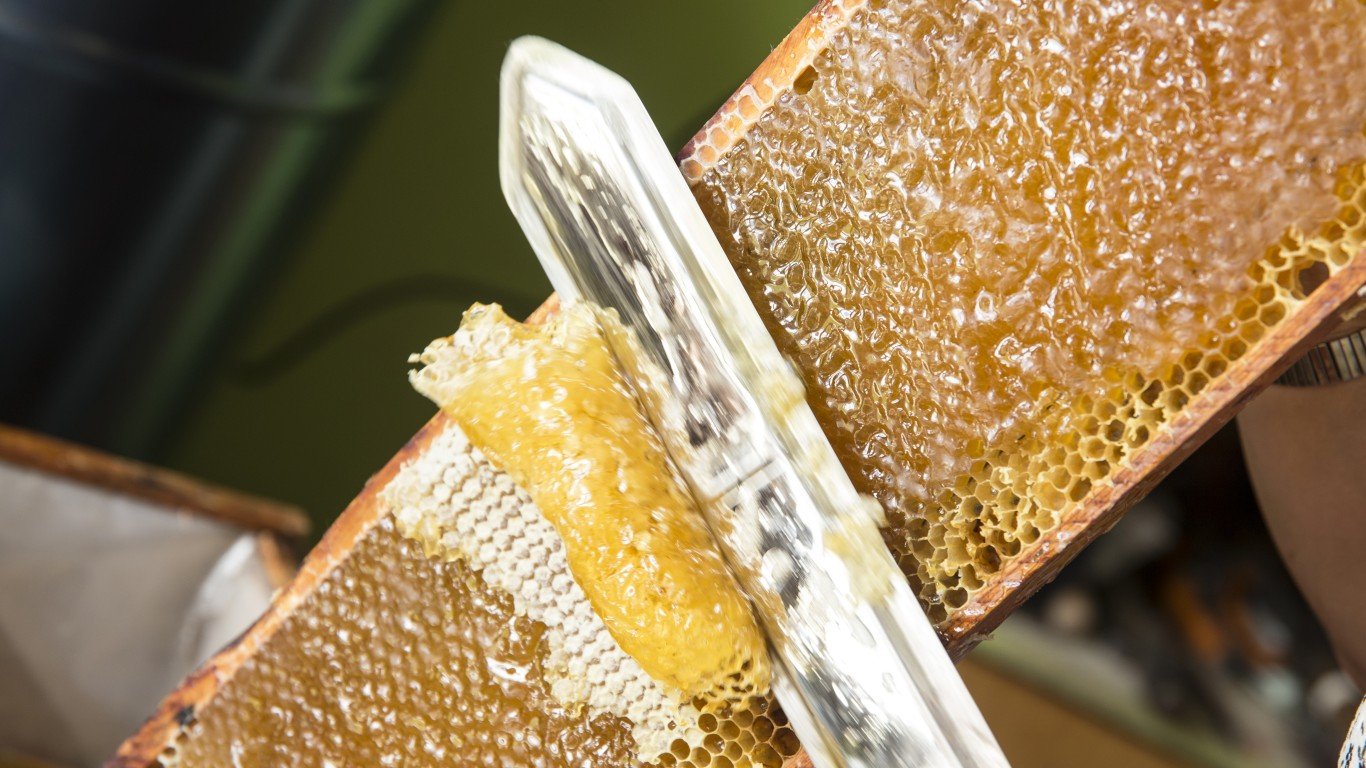
Honey
> Largest U.S. producer: North Dakota
> Largest international producer: China
Climate change has both direct and indirect impacts on honey production and the overall health of honeybee populations. Changes in temperature and precipitation patterns can disrupt the synchrony between the blooming of nectar-producing plants and the foraging activities of honeybees. Droughts, heatwaves, and changes in land use can reduce the availability of flowering plants, affecting the quantity and diversity of nectar and pollen sources for honeybees, while events such as storms, floods, and heatwaves may damage honeybee colonies Bees may also exhibit changes in foraging patterns, nesting behavior, and overall productivity in response to altered climatic conditions. In addition, warmer temperatures can favor the proliferation of certain pests, such as varroa mites and small hive beetles, leading to increased infestations and weakened bee colonies.
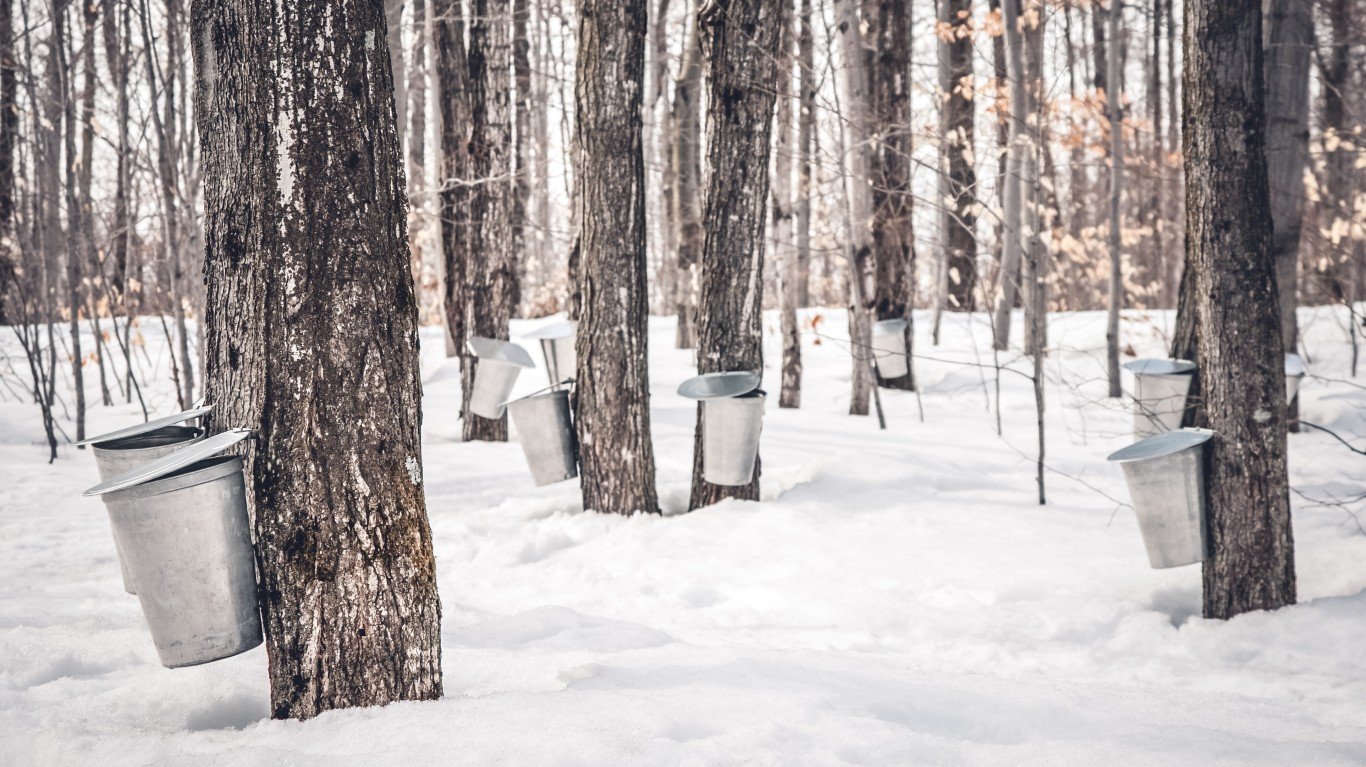
Maple syrup
> Largest U.S. producer: Vermont
> Largest international producer: Canada
Maple syrup production relies on specific temperature patterns during the winter and spring. Warmer winters can affect sap flow in maple trees, and also the timing and duration of the flow. That means shorter or less predictable sugaring seasons. The making of maple syrup is deeply rooted in the cultural heritage of many regions, particularly in North America, and climate change-induced challenges to its production can impact the cultural traditions, livelihoods, and local economies tied to the maple syrup industry.





